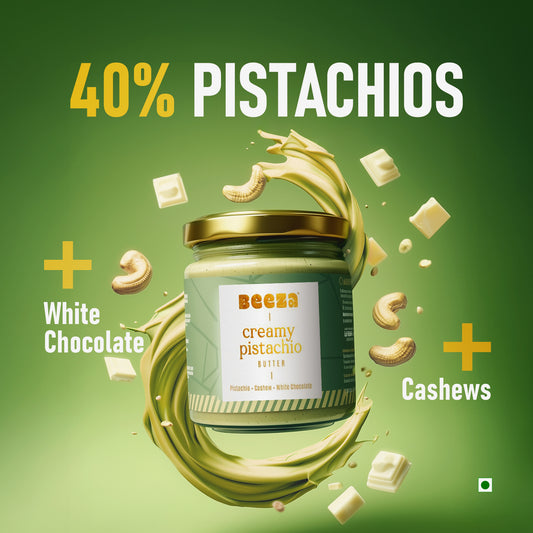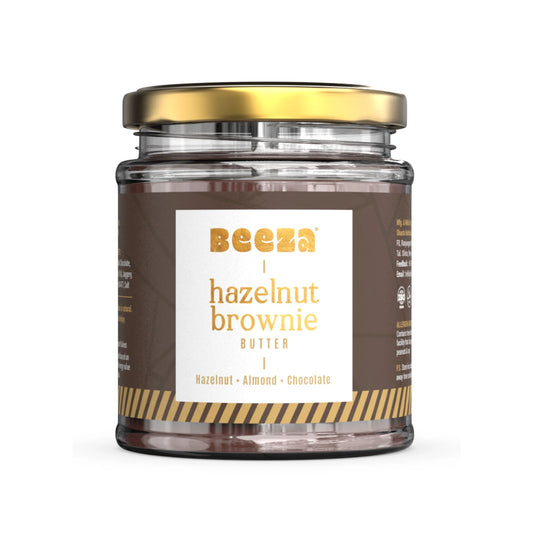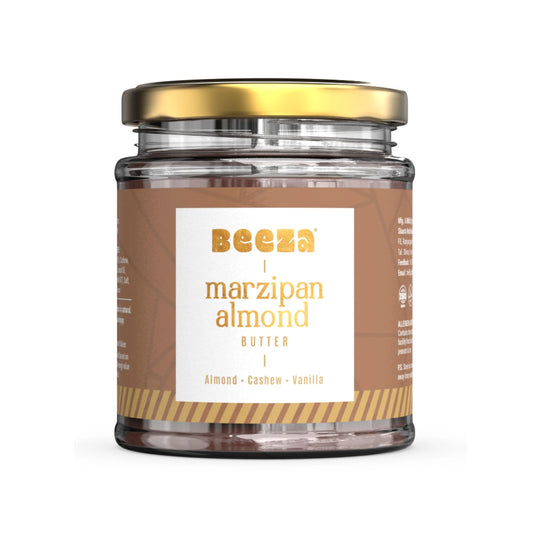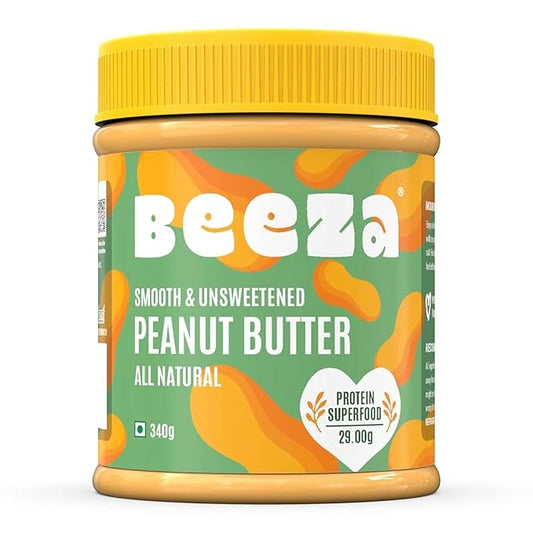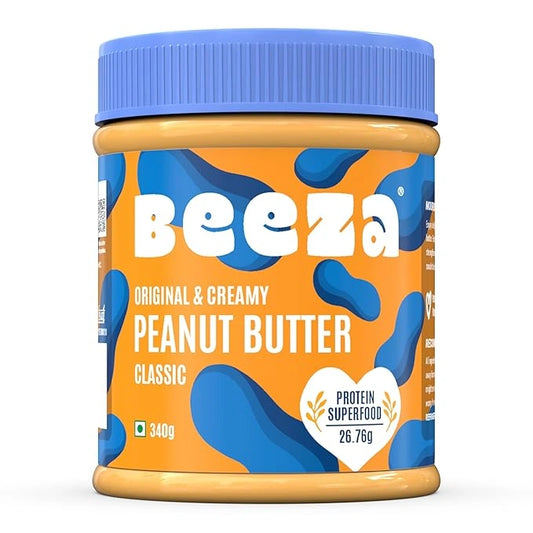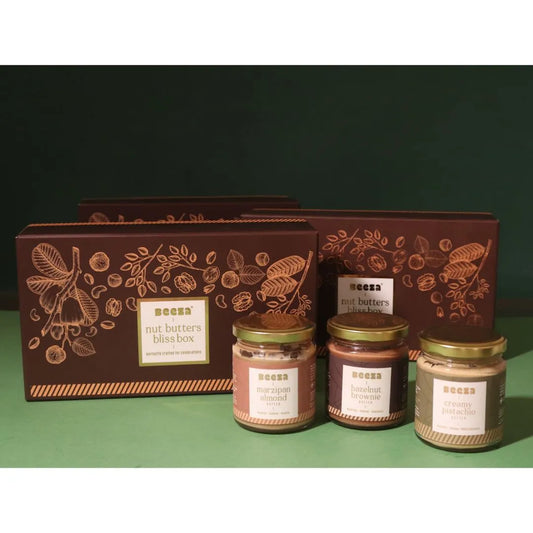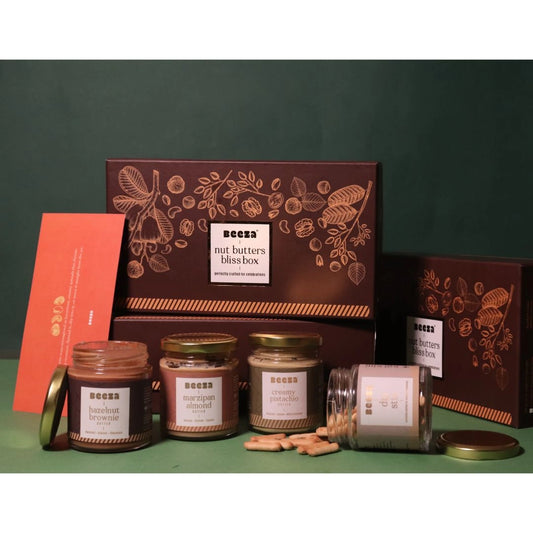Global Nut Butter Traditions: How Different Cultures Enjoy Nut Spreads
Nut butters are comforting, rich, and endlessly adaptable. There are tons of ways to enjoy nut spreads, whether you are reaching for a jar of creamy peanut butter and slathering it on a piece of toast, or whipping up a spicy peanut dip for an epic satay night, nut spreads have entered homes and hearts worldwide.
While peanut butter is probably the nut butter that first pops into your head, every region also has its own take on delicious nutty goodness. Nut butter exists through a variety of recipes from traditional dishes that have been passed down through generations to new-age fusion recipes. When you think about the role of food, from one country to another, food often includes some form of nut butter - each is special in its own right.
In this blog, we take you on a journey of flavor - exploring food traditions and dishes from around the world that pay homage to nut butters in all of their rich, cultural splendour.
The Roots of Nut Butters Around the World
The passion for ground nuts isn't a new fad. Nut based spreads are thousands of years old. The Aztecs and Incas had a fairly common practice of grinding roasted peanuts into a paste, as our modern peanut butter is made. In parts of Africa and Asia where groundnut stews and pastes were local staples for thousands of years before the emergence of a global love for them.
As we moved through history, nut butters evolved - by way of local ingredients, tastes, and cooking styles - and became an institional part of country dishes, festivals, and local cultural identity.
Nut Butter Varieties and Names Across Cultures
North America & Europe
Peanut butter has iconic stature, with North Americans (U.S. and Canada) and the U.K. associating it with their lunches, desserts, and nutrient-rich, healthy snacks. Over the years, various nut butter forms, like almond, cashew, and hazelnut butter have also become more common in everyday meals and snacks, with consumers of all types looking to incorporate plant-based protein and healthy fat foods.
Europe also has its share of nut-based offerings, hazelnut spreads in pastries, flapjacks, and cookies (particularly in the U.K. and France).
Asia
Nut butters add a unique dimension to Asian cuisines.
In Japan, for instance, peanut cream is a sweet component of mochi and bread fillings.
In China, hua sheng jiang (ground nut paste) is used to enrich noodles and savory sauces.
In Thailand, peanut sauces are a common element of satay, pad Thai, and curry, combining element of spiciness with nutty smoothness and richness.
Africa
Nut butters form an important component of many African food traditions, around the world.
For example, in West Africa, groundnut paste is an important ingredient in preparing simmering stews like Maafe.
In Ghana, it shows up in dishes like Nkate Nkawan (peanut soup) combining sweet and spice with vegetables.
In South Africa, peanut butter shows up as both savory elements in street foods like bunny chow, and in baked dishes like bobotie.
Latin America
In Mexico, crema de cacahuate is often flavored with chili and used in complex sauces like mole.
For Brazil, peanuts are a culinary indulgence — seen in paçoca, a dessert made of peanut, adorable sugar, and salt.
Middle East & Europe
In Middle Eastern kitchens, they're incorporating peanut and other nut spreads into spreads, dips, and desserts. For example, muhammara (a red pepper and nut spread) is a great example of how nuts can lend richness to savory plates.
In Europe, nut butters are still being considered for gourmet recipes, pastries, and desserts - as nostalgia provided some comfort food and trending ingredients in the modern health trend.
How Different Cultures Incorporate Nut Butters in Traditional Dishes
African Cuisine
Nut butters form the base for groundnut stews, such as Maafe and Nkate Nkawan which are robust, spicy, and soul-satisfying dishes often served with rice or fufu.
Asian Culture
In Asia, peanut butter becomes incorporated into a sauce, usually covering noodles, used with curries and stews, or as a dipping sauce with grilled meats and vegetables.
European & Western
Nut butters are baked into cookies, tarts and bars, or merely just spread onto toast with jam. Many Western recipes using nut butters also incorporate them into smoothies or energy snacks.
Latin American
Expect bold flavors; chili-spiced peanut sauces, sweet capital or squares, and even peanut butter mixed into filled pancakes or empanadas.
Middle Eastern & Indian
Peanut butters, as well as other nut butters, can be found in spiced dips, brittle (chikki) and in some cases as part of a new format, such as innovative wraps or roasted snacks. Once again, there is an overlay of age-old flavours with 21st century duplicates.
Unique Flavors and Innovations in Nut Butter Uses
As the global culinary scene evolves, so too do the means of experiencing nut butters:
Sweet, spicy, or savory: Honey-roasted almond butters, chili peanut spreads, and much more.
Fusion dishes: Peanut butter hummus, Thai peanut pasta, and peanut butter tacos.
Health-conscious twists: Organic, added sugar-free, protein enriched, and low saturated fat versions.
Modern uses: Spreads on toast, dips for fruit, fillings in baked goods, and swirled into smoothies and oats.
Nut butters aren't just spreads anymore; they have transitioned into a vital ingredient in modern, multi-cultural kitchens.
Cultural Significance & Modern Trends
Nuts butters appear in many cultures as more than just food: they are comfort food, food linked to tradition, and even a way to sustain oneself through tough times. Today, nut butters also serve as healthy, plant-based, sources of good fats and nutrients.
As cultures come together and new cuisines evolve, nut butters are being used in new ways and recipes. Modern people are also more inclined to simple, clean, and natural and organic foods, and in contemporary culture, we see this emerging demand for nut butters that are clean and simple in many parts of the world.
Conclusion
From stews in Africa, to sauces in Thailand, to desserts in Europe, nut butters are a world-wide favorite and bring flavors, comfort, and culture to every dining experience.
Whether you are following traditional recipes, or creating your own uniquely blended fusion dish, nut butters are energetically measured to bring an international flavour experience.
Do you want natural, high-quality products? Check out Beeza’s clean-label nut butters - made in small batches, nutritionally dense, high in good fats, and have origins from international traditions!

